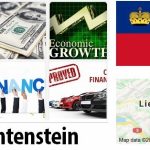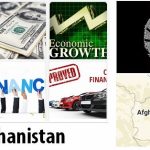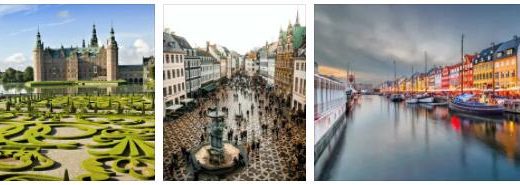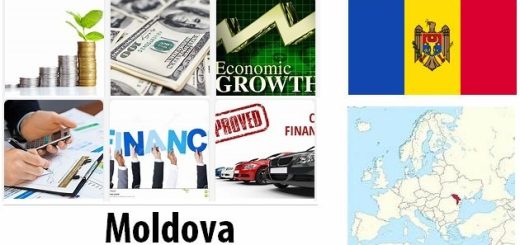Ireland Economy Facts
Economical overview
The economy underwent a rapid transformation after the crisis year of the 1980s. With the help of foreign investment, the country built up a strong high-tech industry. At the same time, tourism and the service sector grew, while previously important agriculture lost importance. In 2007, Ireland had the second highest gross domestic product (GDP) per inhabitant of the EU, but a year later the economy began to deteriorate and Ireland was forced in 2010 to take large crisis loans (see Modern History and Foreign Policy and Defense). Since then, the economy has started to grow again at a rapid pace.
The services sector now accounts for almost two-thirds of GDP. Despite the crisis, Dublin has been able to maintain its role as a hub for financial transactions. Multinational companies such as IBM and Microsoft have long had their Europe base in Ireland, but in recent years Google, Facebook, Twitter, Airbnb and a host of other US companies, not least in the pharmaceutical industry, have their headquarters for Europe, Africa and the Middle East in Ireland.. Aircraft leasing is another growing niche. In 2015, there were over 700 US companies that had about 130,000 employees in Ireland at that time.
- Countryaah.com: Major imports by Ireland, covering a full list of top products imported by the country and trade value for each product category.
In the 1990s, Ireland began to be called the Celtic Tiger, an allusion to high-growth Asian “tiger economies”. Up to 2000, it was mainly increased industrial exports that boosted the economy, and then it was domestic consumption that made the wheels spin.
Low corporate taxes (12.5 percent), economic deregulation and good access to educated, and English speaking, labor contributed to the success. The benefits that Ireland received through EC / EU membership also played an important role. The opportunity to gain a foothold in the EU’s common market caused the US and to some extent the Japanese large companies to move to Ireland. The Irish themselves have gladly pointed out that also domestic entrepreneurs, such as Michael O’Leary who created the low cost airline Ryanair, have played an important role.
- Abbreviationfinder.org: Check this abbreviation website to find three letter ISO codes for all countries in the world, including IRL which represents the country of Ireland. Check findjobdescriptions to learn more about Ireland.
Another factor was the social contracts concluded by the government with employers and trade unions from 1987. The government lowered the income tax in exchange for the employees accepting moderate wage increases and having a certain influence on economic policy. This created a stable labor market with few strikes, which, together with increased productivity, strengthened the country’s competitiveness. The government was able to pay off the central government debt, which in 2005 corresponded to 27 percent of GDP.
Economic crisis
From 2006 there were signs that the air was running out of economy. The shortage of labor led to wage increases which reduced the competitiveness of the industry. Property prices fell after rising at record speed for many years. Weaker economic conditions in the US and the UK meant that exports declined. From the second half of 2008, the economy deteriorated drastically.
When the government promised to guarantee all funds deposited in six Irish banks and financial institutions, the aim was to create market stability, but the banks had hidden how big the problems actually were. The large sums borrowed by the Irish state to save the banks came to burden the state budget. In January 2009, the state took over the crisis bank Anglo Irish Bank and later three more banks were nationalized in order not to overturn. A new authority, Nama, was created so that the state could take over bad property loans from the banks.
Despite all cuts, Ireland broke the eurozone rule that the budget deficit should not exceed 3 percent of GDP. In 2009 it was over 14 percent. The following year, it was almost as large and, taking into account the costs of the banking crisis, it corresponded to almost a third of GDP. In 2008-2010, GDP fell on average by just over 4 percent a year, while the multinational IT companies continued to perform well.
At the end of 2010, Ireland was forced to apply for a € 85 billion crisis loan. The money came from the EU, the IMF, the UK, Sweden and Denmark, but to get the loans Ireland needs to tighten its finances further and raise taxes. Ireland also has to contribute over € 17 billion, money to be raised from state reserves and the National Pension Fund.
The economy is growing again
From 2013, the economy began to grow again. From the end of that year, Ireland was able to borrow money in the open market at a lower interest rate. The budget deficit was gradually reduced to more manageable levels, and at a faster rate than the so-called troika had demanded. Ireland benefited from low oil prices as well as exports becoming cheaper when the euro lost value against other currencies.
The ability of multinational companies to establish themselves in Ireland to avoid paying taxes brought bad blood both in other EU countries and in the US, where corporate taxes were higher. The Irish government promised in 2014 to close the loophole in tax legislation that is usually called Double Irish and means that multinational companies can transfer income from other EU countries to the low-tax country of Ireland, and then legally divert a large portion of the profits to a tax haven. The new rules apply from 2015 and cover all new companies that established themselves in the country, while those already in Ireland were given a five-year deadline.
The EU Commission’s demand that Apple 2016 pay large sums to the Irish government in the absence of tax also put pressure on the government (the entire sum, just over EUR 13 billion plus a little over EUR 1 billion in interest had been paid up to September 2018 and was committed to a special account pending Ireland’s appeal against the decision). At the same time, the low-tax policy attracted new foreign major companies to Ireland. A number of companies moved their head offices and patents to the country after buying up or merging with smaller Irish registered companies. At the same time, the rules had been amended to include investments in GDP statistics. This meant that the profits that these companies made in other parts of the world are now included in Ireland’s GDP, although the companies did not have very large operations there. The share capital in the country rose from 700 billion in 2014 to 1,000 billion a year later. Exports also increased sharply, even though a large part of the goods included had not even crossed Ireland.
The Irish statistical authority CSO therefore had to adjust the growth figure for 2015, from an estimated just under 8 percent to 26 percent. The new figures meant that government debt fell to just under 80 per cent in 2015, instead of the 94 percent calculated by the government. This also meant that the budget deficit was below 2 percent of GDP. At the same time, Central Bank Governor Patrick Honohan, among others, pointed out that this hardly gave a correct picture of the Irish economy. A more reliable measure was that employment had risen by 2-3 percent, and domestic consumption had risen by 4.5 percent. Ireland continued to grow strongly for the following three years, although it was warned that the figures for 2017 were also considered to be inflated (see Calendar).
The election of Donald Trump as US President in November 2016 created a major cloud of concern for the Irish economy. During the election campaign, Trump had promised, among other things, to reduce the corporate tax rate to 15 percent and to ensure that American companies move their business home to the United States.
FACTS – FINANCE
GDP per person
US $ 78,806 (2018)
Total GDP
US $ 382 487 M (2018)
GDP growth
8.2 percent (2018)
Agriculture’s share of GDP
0.9 percent (2018)
Manufacturing industry’s share of GDP
32.4 percent (2018)
The service sector’s share of GDP
55.8 percent (2018)
Inflation
1.2 percent (2019)
Government debt’s share of GDP
63.7 percent (2018)
Currency
euro 1
Merchandise exports
US $ 255,252 million (2018)
Imports
US $ 121,717 million (2018)
Current account
US $ 40,901 million (2018)
Commodity trade’s share of GDP
71 percent (2018)
Main export goods
chemicals, pharmaceuticals, computers, software and transport equipment
Largest trading partner
USA, UK, Belgium, Germany, Netherlands and other EU countries
- 1 euro = 100 cents
2008
September
The government intervenes to save banks
The Irish banks face major problems and their stock prices fall rapidly. The government intervenes and issues guarantees to replace debts and deposits in six banks. Large sums are deposited into the banking system, but it later turns out that the banks have withheld important information.
June
Voters vote no to the Lisbon Treaty
June 12
Ireland referendum as the only EU country on the Lisbon Treaty (see Modern History). Just over 53 percent of the Irish vote no. According to some analysts, the result is because many voters have relied on the power language used by the domestic political establishment and leading EU representatives to persuade the Irish to approve the treaty. Many also vote against concerns that too much power should be concentrated in Brussels, that the EU should be able to demand that abortion be legal in Ireland and that its neutrality may be threatened. The fact that the treaty text is so elaborately worded is also considered to have been recorded. From a number of points it is emphasized that a majority of Irish people are still positive about EU co-operation in general.
May
Ahern leaves
Bertie Ahern resigns as prime minister and party leader due to controversy surrounding his private economy (see Modern History). One reason for his departure is that the leadership of his party, Fianna Fáil, is worried that the referendum on the EU’s Lisbon Treaty will be affected by Ahern’s business. Finance Minister Brian Cowen takes over as party leader and prime minister.













